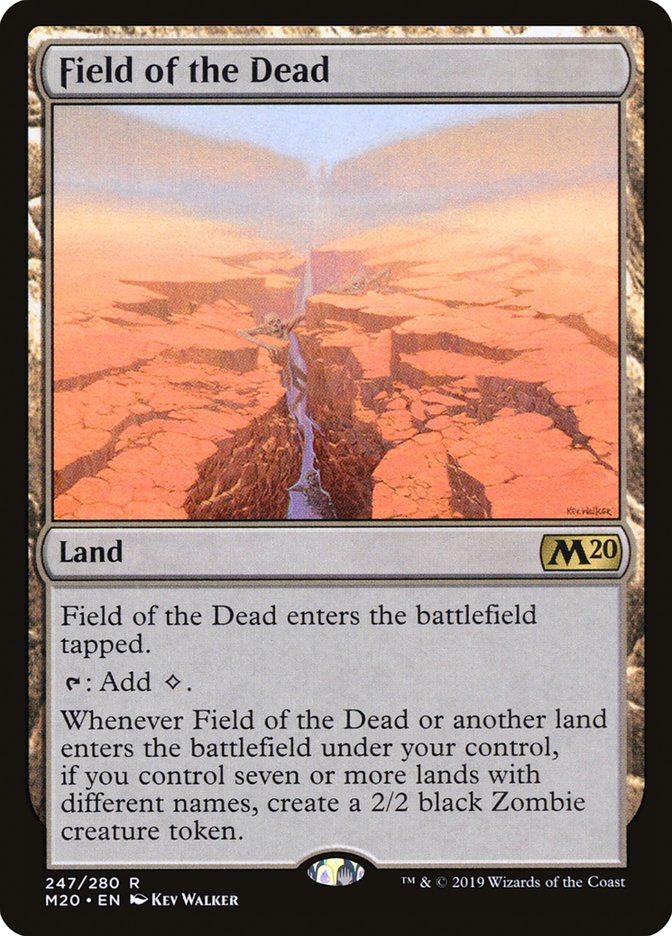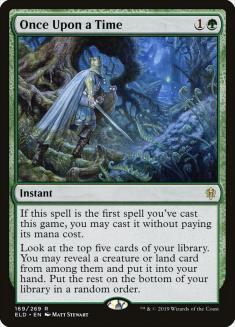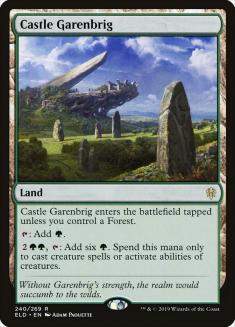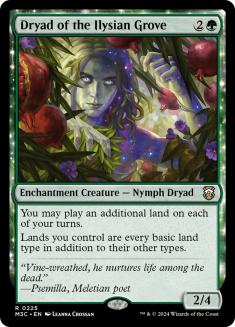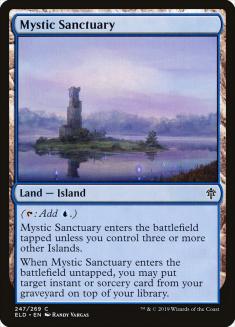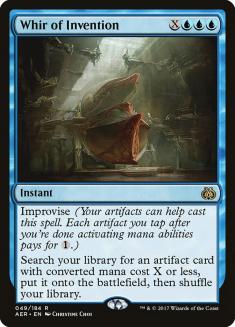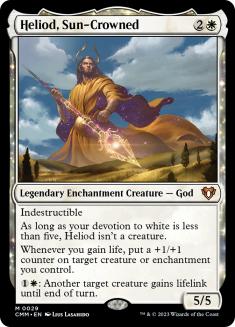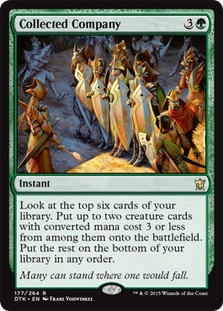It was just another weekend on the SCG Tour. With one Top 4 spot reserved for Matthew Dilks and his trademark Amulet Titan deck, everyone else battled it out in a fresh and diverse Modern format rejuvenated by recent bans that ended the tyranny of Oko, Thief of Crowns and prompted the resignation of Urza, Lord High Artificer.
Amulet Titan is posting the same numbers as Hogaak and Simic Urza in their prime. To see why, we have to understand the seismic changes Modern has experienced in the last year.
Amulet of Vigor and I have a complicated history. When screenshots of Summer Bloom spewing out all sorts of silly lands started popping up on Twitter years ago, I thought the deck was cute – exactly the sort of deck that tickled my fancy and kept me engaged with Magic – but didn’t give it much more thought. When Amulet Bloom became by far the best deck in Modern and everyone was talking about it, I kicked myself for not having the courage to approach it sooner. When I finally did, we had a whirlwind romance abruptly cut short by a sad but necessary ban. As early attempts to revive the deck floundered, I figured it was time to move on.
Last year it looked like things might work out again! In the beginning of 2019, Amulet Titan in its new form was very successful for me and others on the SCG Tour. As Izzet Phoenix took over Modern with the removal of Krark-Clan Ironworks and the rest of the format slowed down, Amulet Titan was well-positioned. Unfortunately the design philosophy on display in 2019 did not bode well for my darling. Every release filled the format with cards that pushed the bar for power level even higher, improving existing decks and creating entirely new ones. As a combo deck with a rigid structure and specific weaknesses and demands, Amulet Titan is less likely to benefit from an influx of new tools than a more conventional deck that just wants to play generically strong cards. Modern Horizons overhauled the entire format, giving Amulet Titan nothing while forcing it to keep up with new predators like Urza and Hogaak. It was starting to look like a relic of a format that no longer existed.
Luckily every subsequent set came with a game-changer for ramp strategies. The blue control matchups were becoming harder as Force of Negation cut off the Tolaria West for Summoner’s Pact chains that gave Amulet Titan inevitability while Stoneforge Mystic allowed them to take an aggro-control role much more easily. Field of the Dead ensured that just resolving one Primeval Titan was enough to create an insurmountable advantage. Against decks like Jund or Death’s Shadow trying to apply pressure with large creatures, Field of the Dead upgraded Primeval Titan into Grave Titan to give you breathing room and not make you hedge against removal by setting up Tolaria West for another threat.
Once Upon a Time is the best card in Modern and this is the best Once Upon a Time deck. While other green decks also use Once Upon a Time as more virtual copies of some key creature, Amulet Titan gets to look for a relevant utility land, Tolaria West to set up a backdoor Pact of Negation or Engineered Explosives, or a bounceland to raise the roof with Amulet of Vigor. In particular, ‘only’ having eight copies of Primeval Titan was a major limiting factor for the deck and this is the first good remedy for that.
Castle Garenbrig offers additional ramp in a deck that sorely wants it and can’t get much more elsewhere – its strength in any Primeval Titan shell is well-documented. Early lists with Throne of Eldraine played one or two copies as players explored its potential in a deck where every land slot matters and which didn’t have many Forests. It proved strong enough that the deck now plays more total lands and fewer of its sacred cows to accommodate Castle. Dilks’ and Ayers’ list from this weekend plays four Castle and cuts back on Gemstone Mine, a staple since the Summer Bloom days, to make room for fetchlands which can find basic Forest against Blood Moon and give you an extra, instant-speed Valakut, the Molten Pinnacle trigger with Dryad of the Ilysian Grove.
Creatures (16)
Lands (30)
- 2 Forest
- 1 Wooded Foothills
- 1 Windswept Heath
- 2 Snow-Covered Forest
- 1 Gemstone Mine
- 1 Golgari Rot Farm
- 2 Gruul Turf
- 1 Breeding Pool
- 1 Ghost Quarter
- 4 Simic Growth Chamber
- 1 Vesuva
- 2 Tolaria West
- 2 Valakut, the Molten Pinnacle
- 1 Bojuka Bog
- 1 Cavern of Souls
- 1 Radiant Fountain
- 1 Hanweir Battlements
- 1 Field of the Dead
- 4 Castle Garenbrig
Spells (14)

During Oko’s last hurrah at SCG Columbus and SCG Knoxville, Primeval Titan was one of the few heroes who could stand up to it. With Oko out of the format, Simic Urza is gone and the other decks that maximized Oko’s power were cut down to size. Although ramp strategies were strong against Oko it was still the best way for many decks to steal games against Amulet Titan by disabling the namesake Amulet or a ramp creature, preventing a Titan from doing any further work, or providing early pressure as a necessary accompaniment for your interaction. Amulet Titan was already poised for success post-Oko but there was another gift still to come:
In suggesting Amulet Titan for the weekend, I wrote that Dryad of the Ilysian Grove had surpassed my expectations and that was before it appeared in both lists in the Top 4. Over the weekend, Dryad let me win several matches without resolving Primeval Titan, deck a Heliod Company player through infinite life by sweeping the battlefield every turn, and pay for Tolaria West and Pact of Negation at crucial moments without a natural blue source – on top of the acceleration that earned its slot in the first place.
Other seemingly cosmetic changes are subtly important. The move to Hanweir Battlements over Slayer’s Stronghold opens up a significant upgrade of Boros Garrison to another green bounceland (in turn freeing up a slot by kicking out Sunhome, Fortress of the Legion), makes it easier to give Titan haste without Amulet, and lets you do so with Amulet without needing to find a bounceland which is important for meeting the threshold on Valakut and Field of the Dead.
Creatures (16)
Lands (30)
- 2 Forest
- 1 Windswept Heath
- 2 Snow-Covered Forest
- 1 Gemstone Mine
- 1 Golgari Rot Farm
- 3 Gruul Turf
- 1 Breeding Pool
- 1 Ghost Quarter
- 4 Simic Growth Chamber
- 1 Vesuva
- 2 Tolaria West
- 1 Misty Rainforest
- 2 Valakut, the Molten Pinnacle
- 1 Cavern of Souls
- 1 Radiant Fountain
- 1 Crumbling Vestige
- 1 Hanweir Battlements
- 1 Field of the Dead
- 3 Castle Garenbrig
Spells (14)

With Dryad adding to a critical mass of good ramp, shaving Azusa against decks that don’t interact with Sakura-Tribe Scout is no longer unthinkable. Even with that in mind it’s hard to cut spells and you need a certain number of lands every game for the ramp cards you do leave in to function properly. This means you only ever sideboard a handful of cards and would prefer some to be lands (hence my Gemstone Caverns as ramp is even more important on the draw). Narrow but high-impact targets for Tolaria West or Summoner’s Pact are easier to make room for and fit more neatly into your sideboard plans now.
The teams that succeeded in Modern either played Amulet Titan or played to beat it. Open winner Eli Kassis boasted a 9-0 record against it in another dominating yet unsurprising performance with a deck on nobody’s radar:
Creatures (4)
Lands (24)
Spells (32)

As one of the Amulet Titan players who fell to Kassis, I was impressed by how hard it was to fight through this wall of disruption. The combination of discard and counters is strong against a deck with a few expensive threats and the inevitability of Field of the Dead or Tolaria West chains counts for much less against an infinite combo with Urza, Thopter Foundry, and Sword of the Meek. Aether Gust adds another removal plus counterspell ‘split card’ that gets around Cavern of Souls and Ashiok, Dream Render is even more effective than normal here as Kassis can protect it easily.
Urza is always the headline act but this is really a Mystic Sanctuary deck. The Simic Urza deck that ran Modern until the recent bans showed the power of Mystic Sanctuary alongside Cryptic Command as a lock, with later builds running Archmage’s Charm as a card that could be spent as Divination to smooth out your draw or traded for a cheap threat and recurred later to shut the door on a game. Kassis even has a Deprive to assemble this lock more easily!
For as much work as Sanctuary did in Simic Urza, that wasn’t a natural home for it. The demands of being a Mox Opal deck based in blue and green meant that – at least in the maindeck – there were few interactive spells that could be bought back and so Sanctuary became just another useful tactic in Simic Urza’s arsenal. Dimir Whirza is flush with the same counterspells but also Thoughtseize or Inquisition of Kozilek as proactive disruption, Fatal Push as the format’s best removal, and Drown in the Loch as a catch-all. One key strength of Snapcaster Mage in midrange or control decks was that, if one of these effects was good, casting it again is likely to still be the best move; Sanctuary lets you do that without even taking up spell slots in your deck! This is especially true after sideboarding when you have access to high-impact instants or sorceries targeted at the matchup. A creature-heavy deck may beat the first Dead of Winter but it’s hard to beat the second when they have double digit virtual copies thanks to Sanctuary and fetchlands.
This highlights Sanctuary’s common strength as a reactive card but it has the often unrealized potential to rebuy a threat that takes control of the game or swings it in some new direction. It’s rare to see this in Modern outside of fringe Through the Breach or Goryo’s Vengeance decks but Whir of Invention fills that role here. A timely Nihil Spellbomb or Pithing Needle wins many games on the spot and the Thopter-Sword combo makes Sanctuary even more crucial as you often need to Whir exactly twice to set it up. The sideboard Torrential Gearhulk is a smart choice as a terrifying threat in longer games that allows a single Whir to be just as scary.
Dimir Urza is a well-rounded deck that lines up well against both Amulet Titan and the decks people may turn to hoping to race Amulet Titan by exploiting its lack of removal. If SCG Philadelphia is overrun by a motley crew of Glistener Elf, Goblin Electromancer, and Birds of Paradise, you’ll be happy to sleeve up Thoughtseize and Fatal Push.
Creatures (32)
- 4 Birds of Paradise
- 4 Spike Feeder
- 4 Kitchen Finks
- 4 Noble Hierarch
- 2 Viscera Seer
- 3 Anafenza, Kin-Tree Spirit
- 2 Walking Ballista
- 1 Giver of Runes
- 4 Ranger-Captain of Eos
- 4 Heliod, Sun-Crowned
Lands (20)
Spells (8)

Heliod Company is another new arrival to Modern that made a fine debut in Richmond. Similar decks have been a feature in Modern for a long time – Melira Company a few years ago or the Devoted Devastation lists that took last year’s Season One Invitational and Players’ Championship by surprise – but never gained long-term traction. This one has several advantages that suggest a brighter future for it. Previous combos were vulnerable to a single removal spell and required either three specific cards or two with an additional payoff for infinite mana, which is hard to assemble quickly and consistently even with the tools available in Modern. Heliod, Sun-Crowned with Spike Feeder or Walking Ballista (or Ranger-Captain of Eos to find it) is a two-card combo which makes Collected Company dangerous even on an empty battlefield and allows you to mulligan more aggressively. With Heliod on the battlefield you can cast Spike Feeder and pass with the threat of activation (and thus infinite life) open at any time, forcing the opponent to have multiple removal spells if they want to act first.
Heliod itself is a surprisingly potent threat in longer games where Kitchen Finks and Ranger-Captain contribute to devotion. Marshall’s list contains a network of three-card combos with Anafenza, Kin-Tree Spirit not just adding two white pips for Heliod but making Walking Ballista lethal with Heliod on Turn 4 and unlocking another infinite life combo with Viscera Seer and Kitchen Finks where Heliod can also fill her role. Marshall’s Collected Company may not always find the exact two cards he needs but he’s almost guaranteed to find a combo of some kind or be one card away from ending the game.
This is unlikely to be the final form for Heliod Combo. Modern features more spells that dig for or directly find creatures than you can possibly play between Once Upon a Time, Collected Company, and cards ranging from Eladamri’s Call and Chord of Calling to Eldritch Evolution and Finale of Devastation. Each of these gives you different incentives in deckbuilding and compete with each other for space as you need a lot of creatures for any of these to work well. Eldritch Evolution ensures you find your missing piece but can also put Magus of the Moon or another hate card onto the battlefield as early as Turn 2, an appealing prospect if Amulet Titan and other combo decks are popular. In a fairer format, the ability to grind through removal with Collected Company and sticky threats like Ranger-Captain of Eos or Kitchen Finks is more reliable. There is still so much room to explore here and I’m excited to see where the Heliod package ends up in this new snapshot of Modern.
Creatures (27)
- 4 Birds of Paradise
- 4 Wall of Roots
- 1 Noble Hierarch
- 4 Strangleroot Geist
- 4 Geralf's Messenger
- 4 Young Wolf
- 1 Blood Artist
- 4 Yawgmoth, Thran Physician
- 1 Cavalier of Night
Lands (21)
Spells (12)

I’d be remiss not to mention Aaron Barich return to the elimination rounds with the Golgari Yawgmoth deck she used to win SCG Knoxville in a very different Modern format just a few weeks ago. This is another creature combo deck that can race all but the best draws from Amulet Titan and can play a range of strong sideboard cards for the matchup. Yawgmoth, Thran Physician single-handedly chews up other creature decks even without the undying creatures that set up a ridiculous combo turn. Yawgmoth has received little press so far given Aaron’s results but she proved the Knoxville win is no fluke. Urza may have won the war – and won the battle this weekend! – but Yawgmoth will be a cloud hanging over the SCG Tour for a while if Barich has anything to say about it.
My advice for this week is the same: learn to play Amulet Titan or to play against it. If you’d rather beat them than join them, SCG Richmond’s results show you how.


